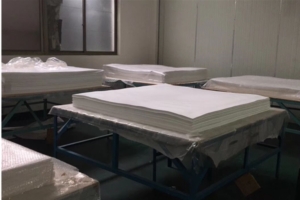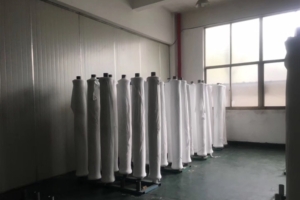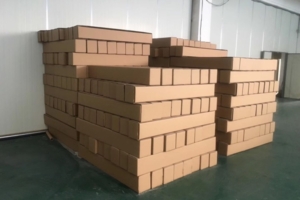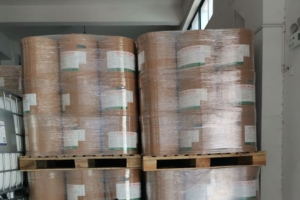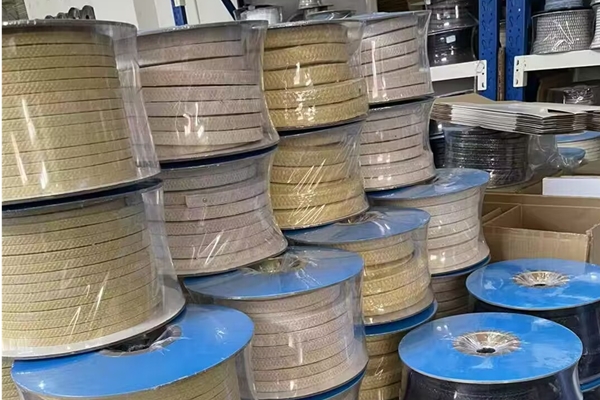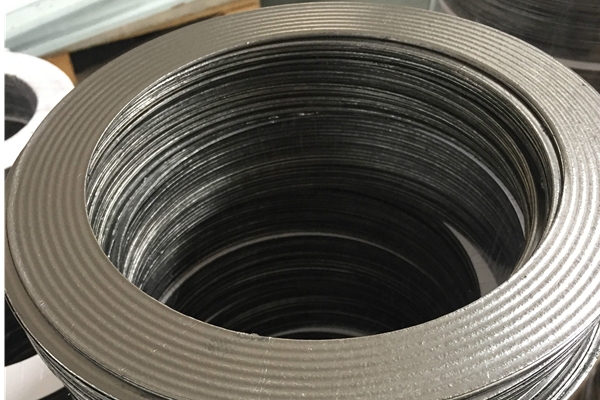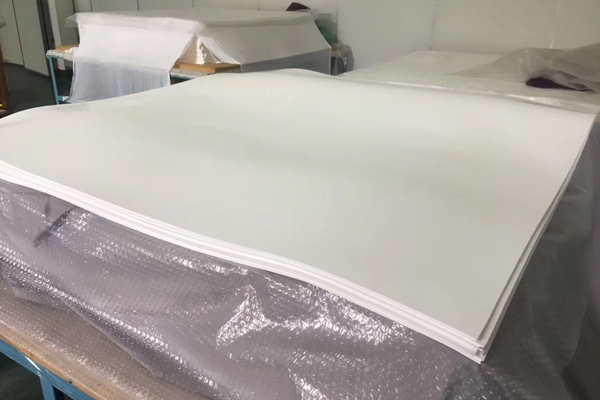Polytetrafluoroethylene (PTFE) is a high-polymer compound with fluorine atoms in the main chain of its molecule. Due to the high dissociation energy of the C-F bond in the molecule, as well as the high electronegativity and shielding effect of the fluorine atom, it has excellent high and low-temperature resistance, chemical stability, dielectric properties, non-adhesion, low friction, weather resistance, non-flammability, and lubricity, making it a highly advanced chemical new material.
PTFE-based sealing gaskets are currently divided into two main categories: pure PTFE gaskets and modified PTFE gaskets. Pure PTFE gaskets are produced either by molding directly from suspended PTFE material or by cutting (turning) from PTFE sheets (rods). Molding plates have uneven density and poor flexibility, while turning plates have relatively uniform density, but their material is curved due to the influence of the processing technology, which is not conducive to installation and use. Modified PTFE gaskets add a certain proportion of functional materials to improve the performance of pure PTFE, but these products are mostly small-sized sealing elements directly molded.
Therefore, developing a better sealing material is currently a major technical problem, and expanded PTFE (ePTFE) is a new type of material that meets this need. Expanded PTFE is a pure PTFE material that is dispersed and processed by a special process to have a multi-directional fiber and closed microporous structure. Its porosity ranges from 40% to 97%, and its pore size ranges from 0.25 to 0.5 micrometers. It not only maintains PTFE’s excellent chemical stability, extremely low coefficient of friction, broad temperature range, excellent aging resistance, non-toxicity, and non-pollution, but also its fine and soft, strong and tough fibers solve the common problems of creep and cold flow in PTFE sealing materials. Expanded PTFE high-density fiber structure becomes more compact, uniform, impermeable, water-resistant, and leak-proof when compressed, and it maintains excellent sealing performance even in harsh corrosive environments, solving some long-standing technical problems in the chemical and petroleum industries. Currently, Expanded PTFE films are not only used in environmental protection by being combined with various base fabrics such as glass fiber and polyester non-woven fabrics, while this article mainly describes the use of Expanded PTFE sheets for sealing purposes.
As a new and ideal sealing material, Expanded PTFE changes some of the shortcomings of PTFE and fully leverages the characteristics of PTFE’s strength, toughness, and porous nature. That’s why we invented the expanded PTFE sheets. LongSeal expanded PTFE sheet production strictly controls the quality from material selection to final product inspection, ensuring reliable quality.
The following is the production process of the Expanded PTFE Sheet:
(1) Disperse PTFE resin in a refrigerator at a temperature of 15℃ for 24 hours, and then screen it through an 8-mesh sieve.
(2) Mix the screened PTFE resin with a promoter and let it stand for 2 hours, then stir for 14 minutes at a mixing temperature not exceeding 19℃. Let it stand for 24 hours. The weight ratio of PTFE resin and promoter is 75-80 to 18-22, respectively. The promoter can be a mixture of kerosene solvent oil, petroleum ether, or paraffin oil.
(3) Perform curing treatment in a curing box at a temperature of 50-60℃ for about 20-36 hours. The preferred curing temperature is 55℃ and the curing time is 25 hours.
(4) Perform to obtain a cylindrical blank; the performing pressure is 28-29kg/cm2 and the diameter of the blank cavity is about 1mm smaller than that of the extrusion cavity.
(5) Extrude with a die with a cone angle of 38-48 degrees and a compression ratio of 60-200. Control the temperature of the die cavity at 50℃-70℃.
(6) Calendar with a two-roll calendar, controlling the roller temperature at 50℃-70℃ and the calendar speed at 1-3m/min.
(7) Decrease with a new integrated raw material strip stretching machine, controlling the temperature at 100℃-200℃.
(8) Biaxially stretch the degreased film with a specialized biaxial stretching device at a temperature of 200℃-350℃, and control the drawing rate at 0.5-5m/min.
(9) Composite molding: superimpose multiple biaxially stretched films and composite them at a temperature of 300℃-380℃. Compress the biaxially stretched films added to 85%-95% of their original thickness.
(10) Shape and trim at a temperature of 100-200℃. Shape and trim the composite molded sheet.
The PTFE dispersion resin used for expanded PTFE sheet is mainly low-compression PTFE dispersion resin, which is obtained by emulsion polymerization, forming primary particles of 0.2-0.3 microns and then coalescing into secondary spherical particles of 400-500 microns. The biggest characteristic of PTFE dispersion resin is that it easily becomes fibrous under shear force. Expanded PTFE Sheet also has strong static electricity and is prone to dust absorption, so the operating environment should be kept clean.


